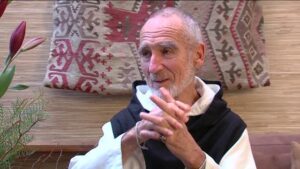How mindfulness and restorative justice are two sides of the same coin.
Neanta Parnell – January 9, 2023
Inner Strength Education provides mindfulness techniques and tools to help youth manage conflict, confusing emotions, and encourage personal reflection. It is our hope that by helping youth better understand themselves and communicate effectively, they will live happier lives and have the wisdom to become their best selves and be resilient to the obstacles of the world around them. In this way, teens can forge meaningful relationships within themselves and with their community or chosen support system.
In that same vein of community support, restorative justice; a term used in opposition to, or as an alternative for the traditional criminal justice system, has gained traction . With roots in Native American and indigenous practices, the premise is to rehabilitate community relationships marred by behavior often referred to as, ‘criminal’. Instead of viewing an offense as a breach of statute or law, restorative justice seeks closure, accountability, and restoration of relationships, and addressing root causes of criminal behavior (About Restorative Justice, n.d.). It is a proactive alternative to a system that is largely reactive.
Native American tribes have practiced what is called a Peacemaking circle to resolve harmful behavior within tribal communities (Marsh, 2019). Peacemaking circles are designed to heal damaged relationships by bringing together immediate parties affected. These parties can include what we know as the defendant and victim, as well as family and community members (Lambson, n.d.). The involved parties, along with an elder, discuss underlying causes of the conflict, how to prevent future conflict, a punishment for the offender, and ways for the offender to atone, or make right, what they have wronged.
A recent study applied the philosophy and technique of Peacemaking to inmates at the Red Hook Community Justice Center in Brooklyn (Lambson, n.d.). Peacemaking was made available as a pretrial option for select misdemeanor and juvenile cases. Each Peacemaking session lasted 2 to 3 hours. Results showed that those who took part in Peacemaking circles, generally had their cases dismissed and accepted their responsibility, or role in their related conflict.
This approach to ‘criminal’ behavior is novel in modern-western society. Restorative Justice seems to provide victims and offenders with a sense of closure. The traditional criminal justice system seems to equate conviction with closure for the victim and their family – as if the fact that the offender has suffered a consequence, should provide emotional and psychological closure. In judicial law, closure is referred to as a procedure for ending a debate and taking a vote, or a closure of motion. This is in stark contrast to the psycho-emotive inclusive definition of closure which is as follows:
“Closure means finality; a letting go of what once was. Finding closure implies a complete acceptance of what has happened and honoring of the transition away from what’s finished to something new. In other words, closure describes the ability to go beyond imposed limitations in order to find different possibilities” (Brenner, 2011).
Studies suggest closure is needed to significantly reduce feelings of stress and anxiety about things that concern us (The Impact of a Need for Closure and Support Quality on Verbal and Cognitive Brooding – Tamara D. Afifi, Anne Merrill, Sharde Davis, Amanda Denes, Samantha Coveleski, 2019, n.d.). With proper support and guidance to reframe thought processes and brooding associated with stress, we are able to let what stresses us go, or feel better. The study also showed that just talking about the stressor helped people feel better. What would be optimal, would be to discuss stressors in an environment that requires accountability and the ability to be receptive to emotions surrounding the issue – a peacemaking circle.
Inner Strength’s Strength and Stability program borrows philosophies from peacemaking circles in the form of teen listening sessions and group discussions about how mindfulness can influence our thoughts and emotions in a positive way, in a controlled environment. Restorative justice is an aspect of mindfulness as mindfulness is an aspect of restorative justice. To learn more about restorative justice, peacemaking circles, and mindfulness check out part two of this blog.
References
About Restorative Justice. (n.d.). University of Wisconsin Law School. Retrieved January 9, 2023, from https://law.wisc.edu/fjr/rjp/justice.html
Brenner, A. (2011, April 6). 5 Ways to Find Closure From the Past. Psychology Today. Retrieved January 9, 2023, from https://www.psychologytoday.com/us/blog/in-flux/201104/5-ways-find-closure-the-past
The Impact of a Need for Closure and Support Quality on Verbal and Cognitive Brooding – Tamara D. Afifi, Anne Merrill, Sharde Davis, Amanda Denes, Samantha Coveleski, 2019. (n.d.). SAGE Journals. Retrieved January 9, 2023, from https://journals.sagepub.com/doi/abs/10.1177/0093650216644018
Lambson, S. H. (n.d.). Peacemaking Circles. Center for Court Innovation. Retrieved January 9, 2023, from https://www.courtinnovation.org/sites/default/files/documents/Peacemaking%20Circles%20Final.pdf
Marsh, C. (2019, November 1). Honoring the Global Indigenous Roots of Restorative Justice: Potential Restorative Approaches for Child Welfare. Center for the Study of Social Policy. Retrieved January 9, 2023, from https://cssp.org/2019/11/honoring-the-global-indigenous-roots-of-restorative-justice/



